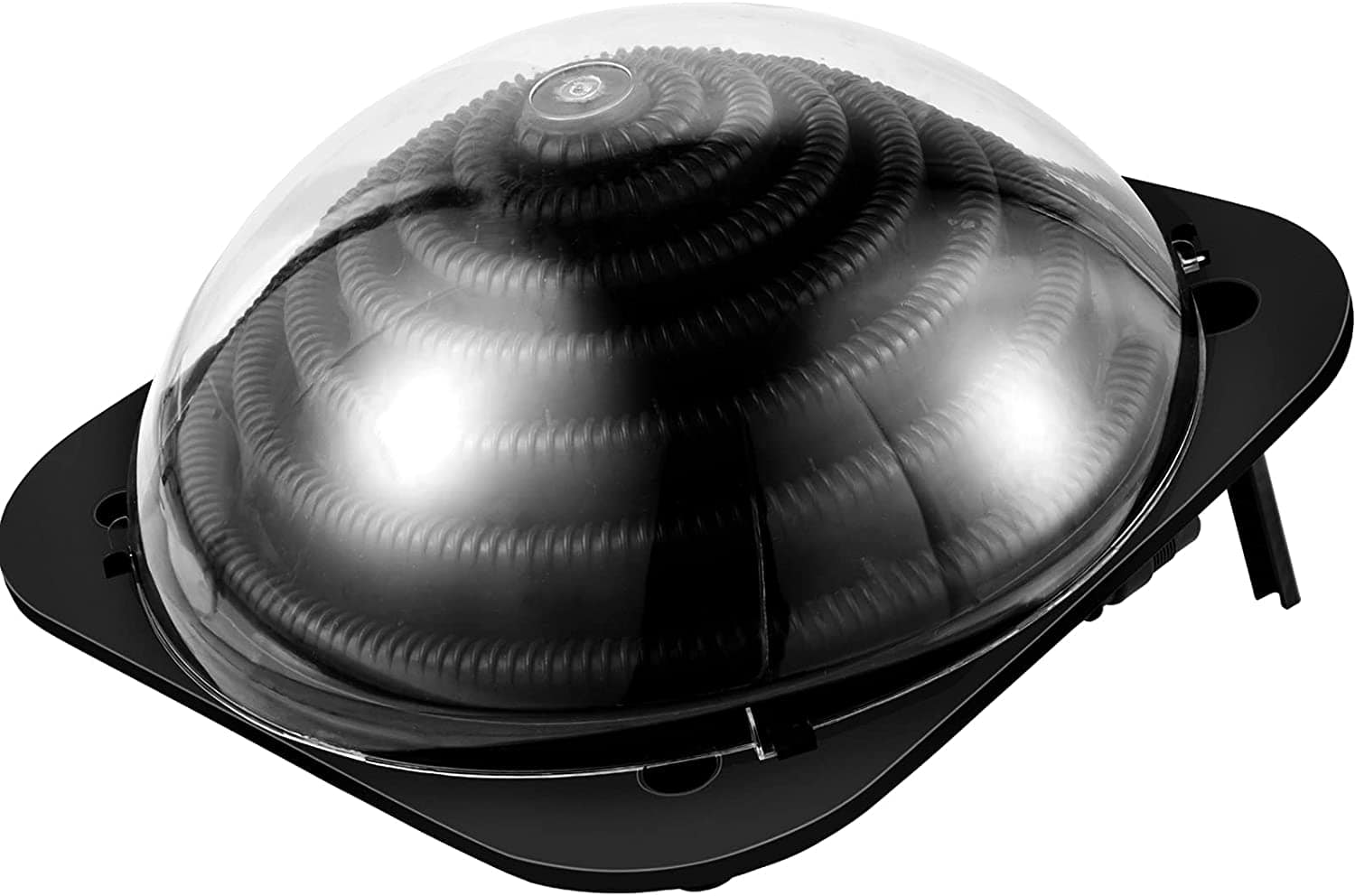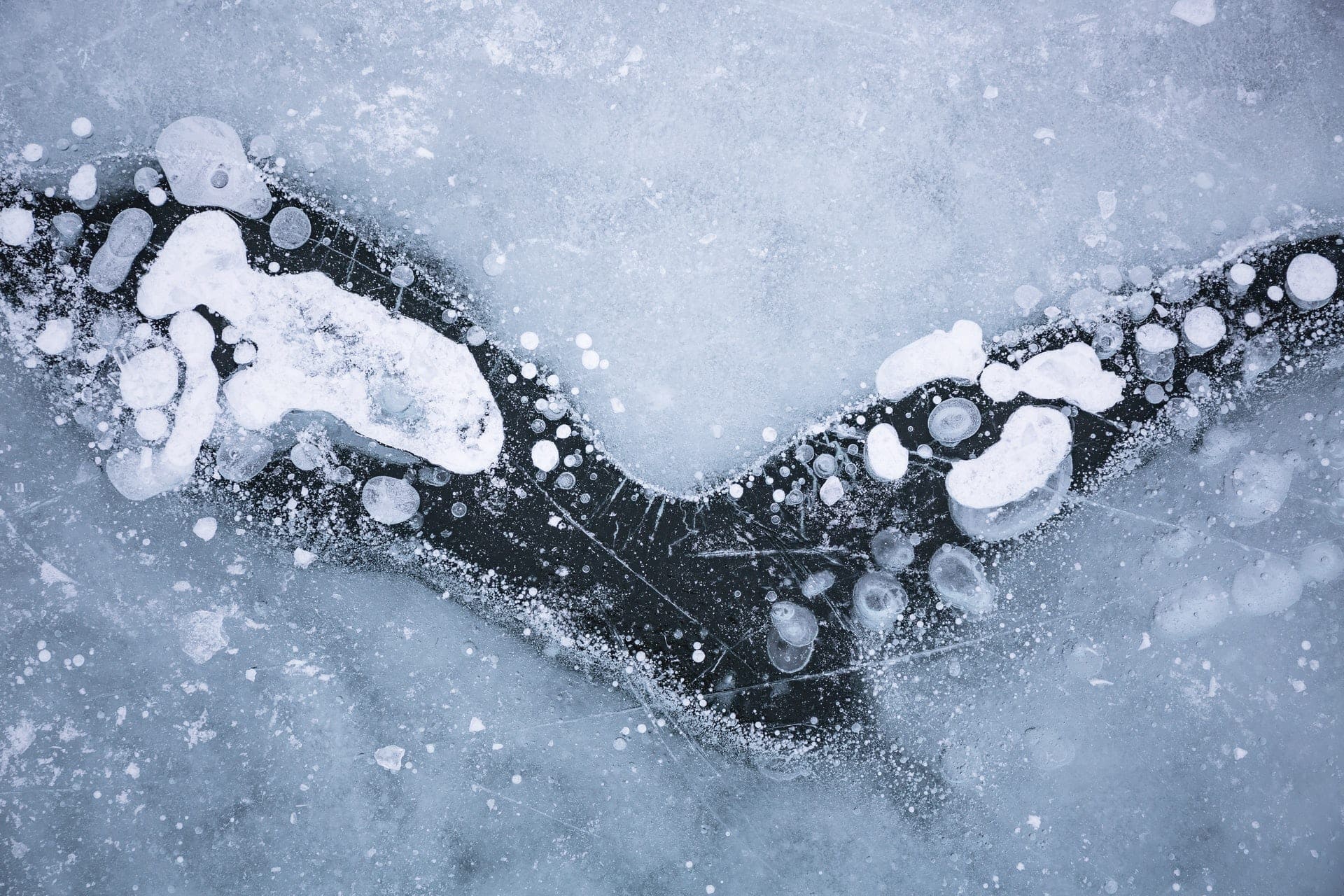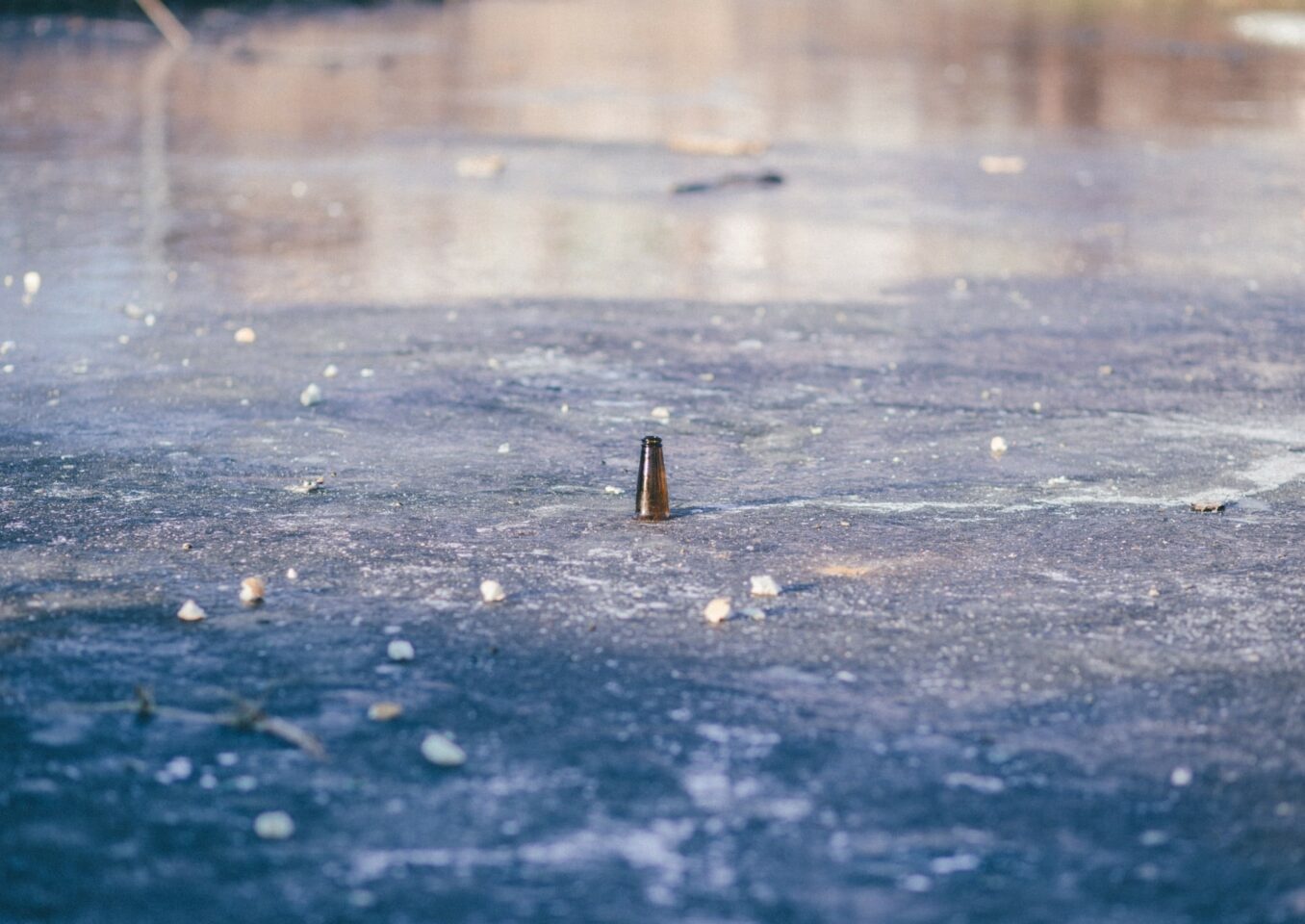Some fish can survive a day or two under a frozen pond, but it depends on the conditions of the pond and whether it has been winterized. If you have ornamental pond that does not contain any fish, do you really need to prevent it from freezing over in the first place?
If you have a decent stock of fish that are particularly susceptible to freezing conditions, or are unable to winterize the pond. and therefore prevent the buildup of harmful gases, you may need to prevent a frozen surface. This is easily achieved with access to electricity, but if your pond is far from the home or has limited plugs, you have fewer strategies at your disposal.
Read on to find out more about frozen ponds and how to prevent them.

Why Is a Frozen Pond a Problem?
If you have chosen the right fish for the prevalent weather conditions in your area, your stock could be happy in cold water. However, even for those fish that can survive cold conditions on the surface, there are still hazards.
All fish require some oxygen in the water so that they can breathe. Typically, this is achieved through aeration, which occurs naturally but also through the pumping of water. It creates air bubbles in the water that your fish can use to survive. This doesn’t require that the whole surface remain ice-free, but having a portion of the pond clear of ice will help ensure oxygenation for your fish.
Plants and dead fish that are trapped under the ice can also rot and may give off noxious fumes or other toxins that would otherwise escape in the air.

Using What You Have
If you already have a pump in the pond, it is worth ensuring that this is well-maintained and operating at the right setting. A weakened pump may stop working in cold months, whereas a well-maintained pump will continue to push water around the pond and prevent it from freezing.
Cleaning and Winterizing a Pond
If your pond freezes over and you are unable to prevent it, you can ensure that it is well winterized to help the fish survive under the impenetrable ice. Cut plants back or remove them, and cull any sick fish before winter. You will still need to check the pond, too. Try at least to keep a hole the size of a dinner plate completely free of ice.

The 8 Ways to Preventing a Pond from Freezing
1. Ensure Your Filter Is Working Properly
The filter in your pond will remove toxins and reduce the danger to your fish, and if the filter and pump are working well, they can prevent the water from freezing over in the first place. Position your pump so that it redirects cold water to the surface. This prevents the cold water from displacing the warmer water that has settled at the bottom of the pond.

2. Dig It Deeper
Consider digging your pond deeper. Shallow water freezes more easily, but the deeper the water, the more room there is under a layer of ice. A pond that is 3 feet deep is harder to freeze, and fish ponds should be a minimum of 4 feet deep anyway to offer optimal conditions to its finned residents. If you can’t dig the hole pond deeper, try and dig a portion of it out to offer more depth for your fish.
3. Cover It
It is possible to buy premade covers, but you can also create your own pond protector using a tarp, bubble wrap, or netting. The water underneath a protector should not freeze as easily, and you can go the extra mile to create a framed cover that sits above the pond and creates a greenhouse effect and warms the area underneath.

4. Use a Float
Any reasonably sturdy object that floats can be placed in the pond. The movement of the object stops the water from freezing, at least in that area. Even something as small as a table tennis ball could provide that plate-sized hole that you need to maintain your pond at a good temperature. Other floating devices include bottles, footballs, and tennis balls.
5. Install a Solar Pond Aerator
An aerator usually makes up part of the pump and filtration system of a pond, and it injects oxygen into the water. These are ideal to prevent ice from forming because the motion of the water helps raise it a couple of degrees and also prevents a sheet of ice from forming. However, if you do not already have an aerator and have no access to an electric outlet, your pond still needs protection from the cold. A solar aerator cannot usually collect and store much solar, however, so may only prove useful during the day. Unfortunately, your pond is likely to be at its coldest overnight.

6. Try a Windmill Aerator
A windmill aerator will work at any time of the day, as long as there is some wind. These are essentially windmills. As the wind blows, it turns the turbine which, in turn, turns the motor that aerates the water in the pond. If you live in an area where the cold winter months tend to be accompanied by wind, this could be an effective solution, but you are at the behest of the weather.
7. Install A Solar Water Heater
A solar water heater is another device that uses atmospheric conditions to power a device. A water heater can be placed in one section of the pond, so it does not need to be excessively large and will not need a prohibitive amount of power to operate. The solar panel creates power from the sun’s rays and then warms a section of the pond. Again, these are less effective at night, unless you have some form of battery backup.

8. Combine Strategies
Most of the solutions above will work in certain conditions, but none of them will work without fail and in all conditions. Combine two or more methods to cover as many eventualities as possible. A solar and wind-powered aerator will work when it is daytime or windy. Add a floating device, and you can probably prevent most instances of frozen water throughout the year. One strategy to always include is that of winterizing and cleaning the pond.
 How to Thaw a Frozen Pond Safely
How to Thaw a Frozen Pond Safely
If a cold snap hits and it does cause your pond to freeze over, you should avoid simply smashing the water. The loud banging will reverberate and can cause serious stress for your fish, potentially even killing some of the more easily startled species you have.
Do not use boiling water, either, because this can cause serious injury to the fish and the sudden temperature change can be a problem throughout the entire pond, not just for the fish that were caught in the stream of the kettle. Use warm water, put it in a plastic container, such as a bottle or a thick bag, and put it on the top of the ice. It will lower the temperature and will eventually cause a hole to form, which should be enough to ensure the continued good health of your fish.


Conclusion
A garden pond offers a place of solitude and somewhere to experience nature without having to leave the comfort of your own border. Managing the pond means ensuring that the fish have a comfortable and safe environment and water temperature is one consideration.
Fortunately, if you have chosen the fish stock in your pond according to the temperate conditions around your pond, most fish should easily survive the cold-water conditions. They eat less, move less, and require less anyway.
Hopefully, we have given you several methods to try and prevent your pond from freezing over without the use of electricity.
See also:
Featured Image Credit: freestocks, Unsplash
